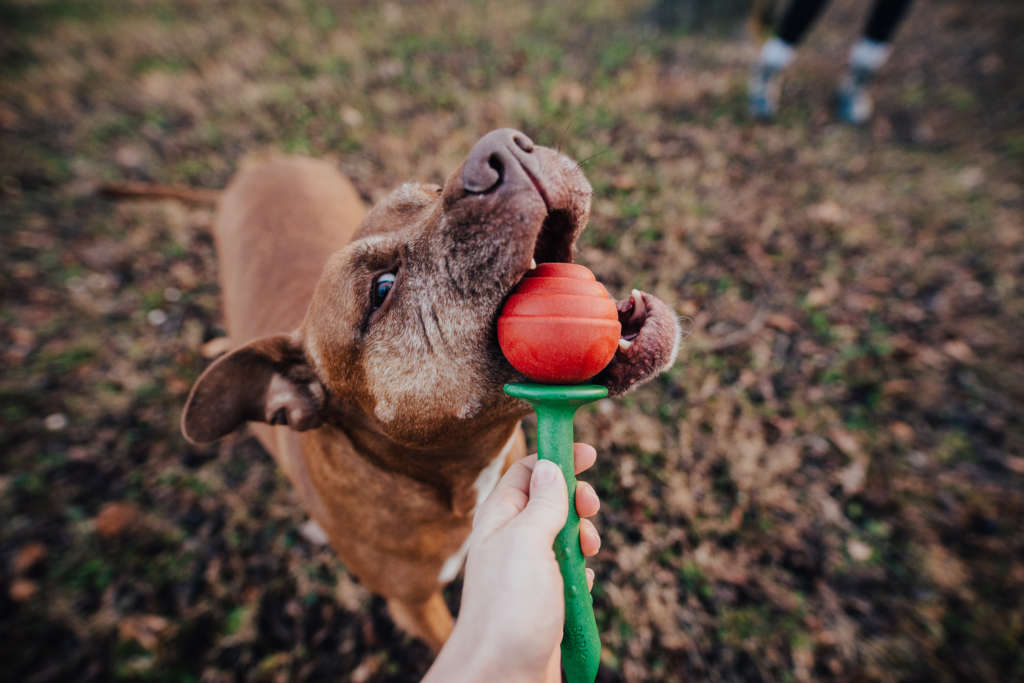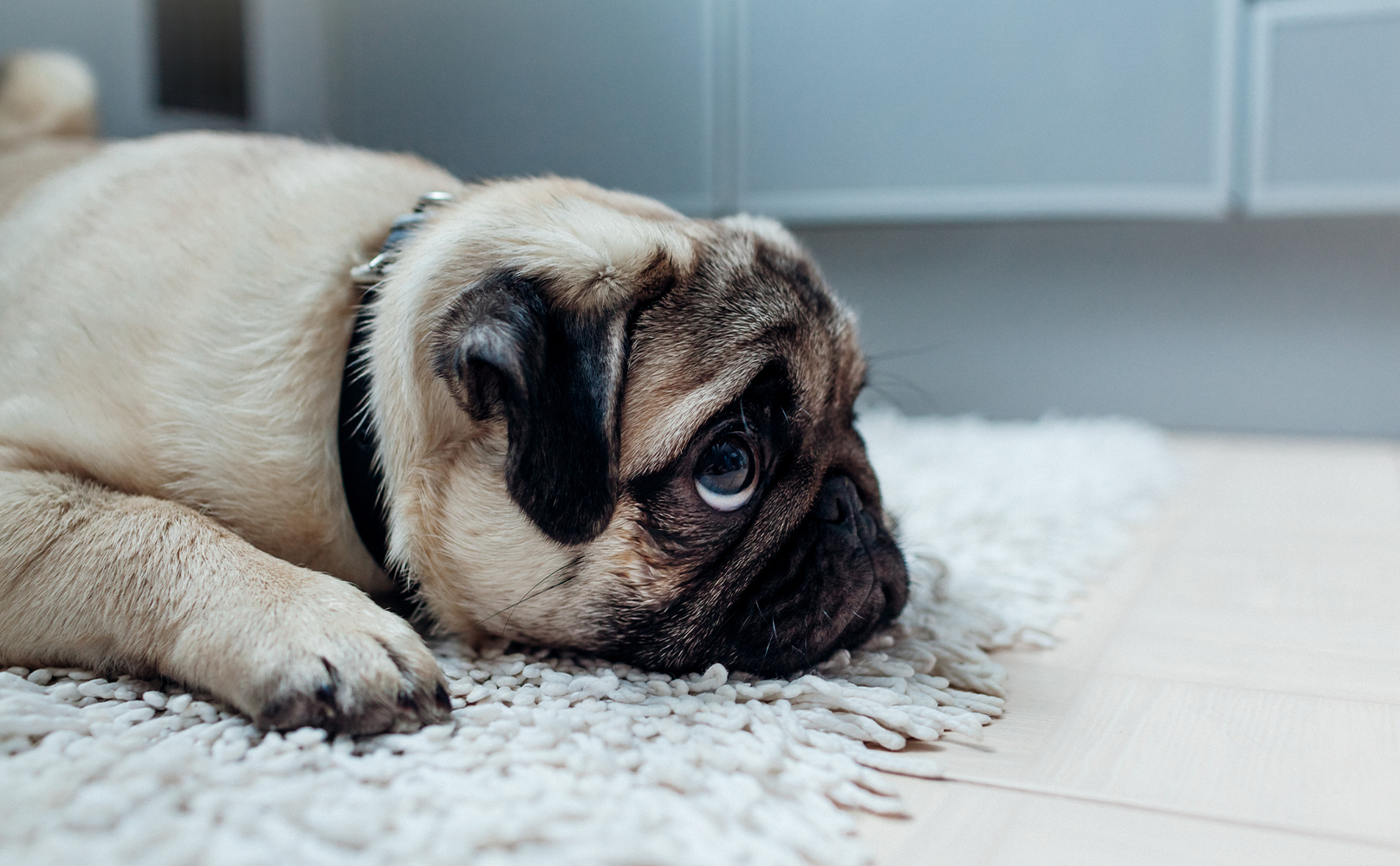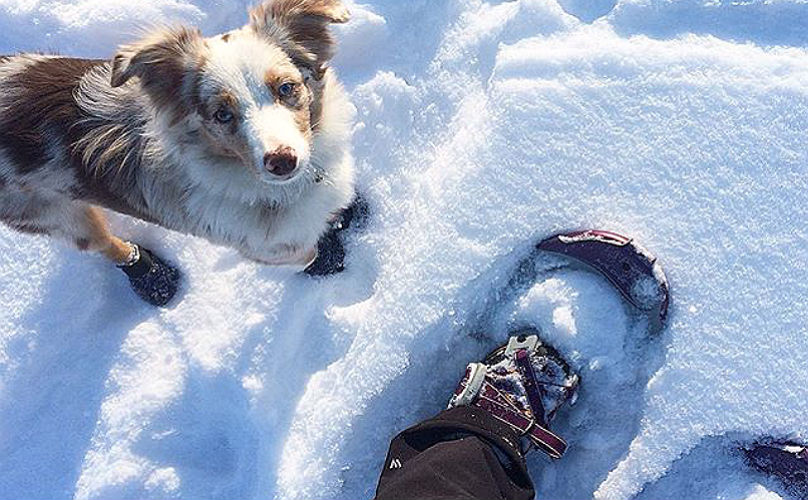There are several things we as dog parents unintentionally do that mess with our dogs’ emotions. No matter how hard we try to be perfect, some of our human ways can lead to one confused pup—and sending mixed signals to our dogs will make them more likely to misbehave. But is it really bad behavior, or just bad communication?
Here are 15 common puppy-parenting missteps you can easily avoid:
1. Confusing Commands
How many of you have called to your dog only to have a wild west standoff ensue? Well, why exactly are you calling them? We often expect our dogs to come even when they know there’s no incentive to do so.
Instead, ensure that “come” works every time by rewarding your dog with a puppy party every time they obey this all-important command.
The keyword here is reward. Puppy parties should involve anything your dog finds rewarding—a nice belly rub, a yummy treat, their favorite toy, anything they love. Unless your dog absolutely, 100% lives to take a bath, a puppy party should not involve bathtime. They most certainly won’t want to come when called if they’re met with something they view as punishment once they get to you1.


Never punish your dog for coming when called. Even if they’ve just come back after an hour-long escapade through the neighborhood, and you’ve been trying to herd them home, they still get a puppy party. Additionally, remember to always issue a recall command with a pleasant tone and a smile on your face; your angry voice and scowling face are not exactly a welcoming invitation.
2. Allowing Jumping
Do not allow your dog to jump on guests, period. Even if you have a friend that insists “Oh it’s okay! I’m a dog person!” jumping should be a big no-no. Your pup doesn’t know the difference between a twenty-year-old who is a “dog person” and seventy-five-year-old Grandpa who just had a hip replacement.
If you have a dog that jumps, warn your guest before they come over. Ask your guests to turn away from your dog and ignore them until your pup is sitting quietly. Teach your dog that they get lovin’ when all four paws are on the floor, and not before.
3. “Rubbing Their Nose In It” After A Potty Accident
Rewarding your dog for going potty outside is an integral first step to house training. A key part of house training your dog, however, is preventing indoor accidents from happening in the first place. Yelling at your dog, rubbing their nose in their mess, or giving them a spanking doesn’t teach your dog to potty outside, it teaches them to be fearful of you2 and to be sneakier with their accidents. (And come on, you paid good money for those bath rugs.)
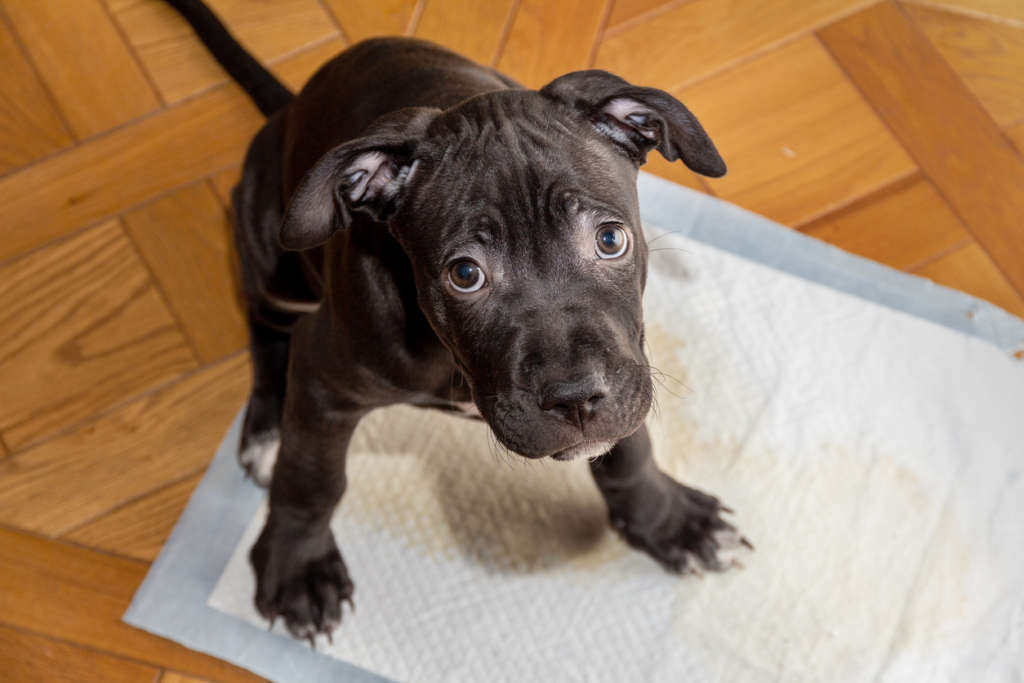

While house training, your dog should always be within sight and constantly monitored. Kennel your dog or puppy while you can’t watch them, keep them on a leash, or if they are small, have them in your lap while you are on the couch or at the computer.
Related Article: How To Crate Train A Dog Or Puppy
Don’t wait for your them to do the potty dance or assume the squat position—set your dog up for success and offer plenty of opportunities to go potty in the right place.
4. Playing It Fast & Loose With Leash Rules
Pulling on the leash is inherently rewarding for dogs. Why? Because it gets them where they are going. Don’t allow your dog to strain the leash and drag you from place to place. If your dog is pulling, make like a tree and stand still. Once the leash relaxes and your dog is looking at you, continue your walk.
Another option is to turn around and walk in the opposite direction. Don’t forget to cue (“yes!”) and reward your dog when they’re walking politely on the leash. A dog that walks at your side and offers eye contact is a dog that deserves a reward!
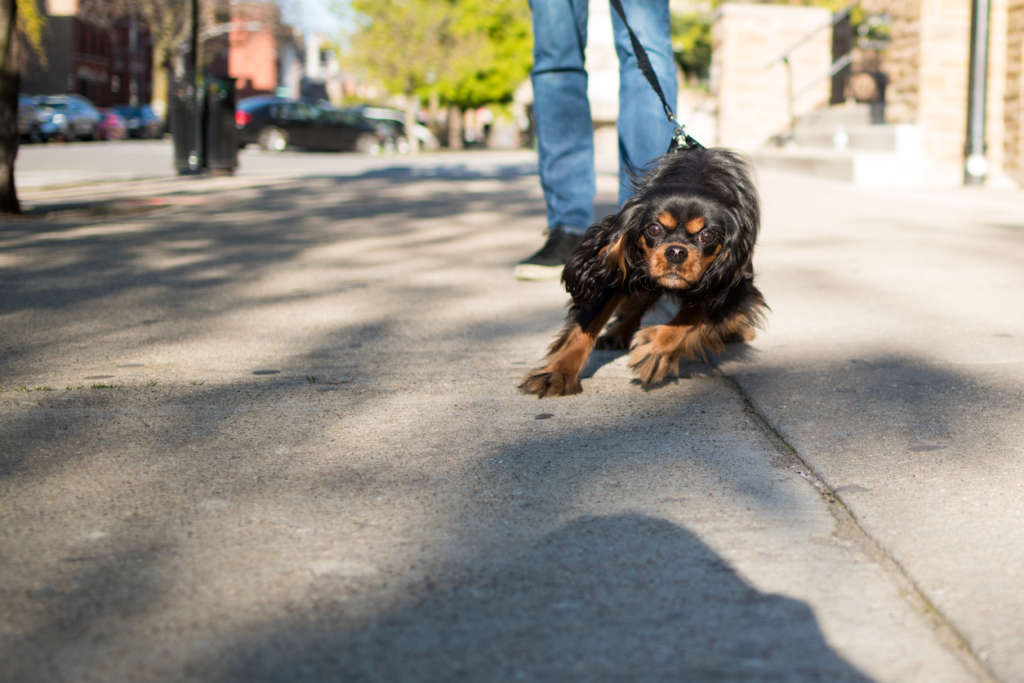

Remember loose-leash walking takes practice and patience! Your dog may look like a yo-yo for a while while they’re learning that pulling won’t get them where they’re going. Also note, your dog will NOT learn how to loose-leash walk on a retractable leash3. If your dog pulls forward on a retractable leash and the leash extends, your dog just learned “pulling gets me there faster!”
5. Using Potty Time As Play Time
Potty breaks are not the time to sniff all sixteen rocks Max from next door peed on yesterday, or to roll in the grass by Coco’s house. Potty time is potty time. Your dog only needs the length of the leash to do their business. Teach your dog that social hour starts after business gets done.
This is especially important for those night time potty breaks. It might be cute the first time, but eventually you won’t want to take your puppy out at 3AM to look at the stars. Take them out to do their business and put them right back to bed. You’ll thank yourself later.
6. Using A Crate As Punishment
So, your dog is less than eager to spend time in their crate… well, how many times have you used the crate as a form of punishment? Your dog’s crate should be a safe, comfortable place that they’re eager to visit. It’s that magical den where they can curl up and relax with a peanut butter-stuffed treat, not where they’re sent for misbehaving. Never use the kennel as a form of punishment!
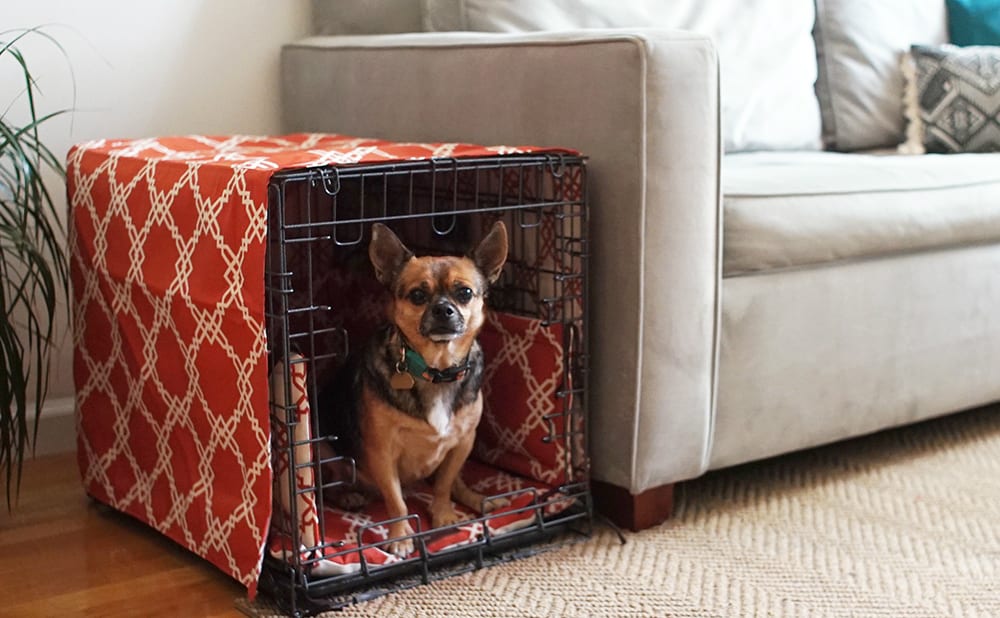

7. Reinforcing Barking With Talking
Petting, talking to, playing with, and even scolding a barking dog reinforces the dog to bark. Do not give a dog attention while they’re barking. The best remedy is the good ole’ cold shoulder. And don’t forget to praise and reward when your pup is being quiet!
Barking can be inherently rewarding for some dogs, especially for many smaller breeds. Make sure the reward you give your dog is more rewarding then the barking itself. You may have to test out several treats and toys to find out what makes your pup goes absolutely bananas.
8. Giving In To Begging
Those big eyes peering at you from under the table can be pretty hard to ignore—it can be especially hard when you find a warm, fuzzy face in your lap. Do yourself (and your guests) a favor and never feed your dog from the table.
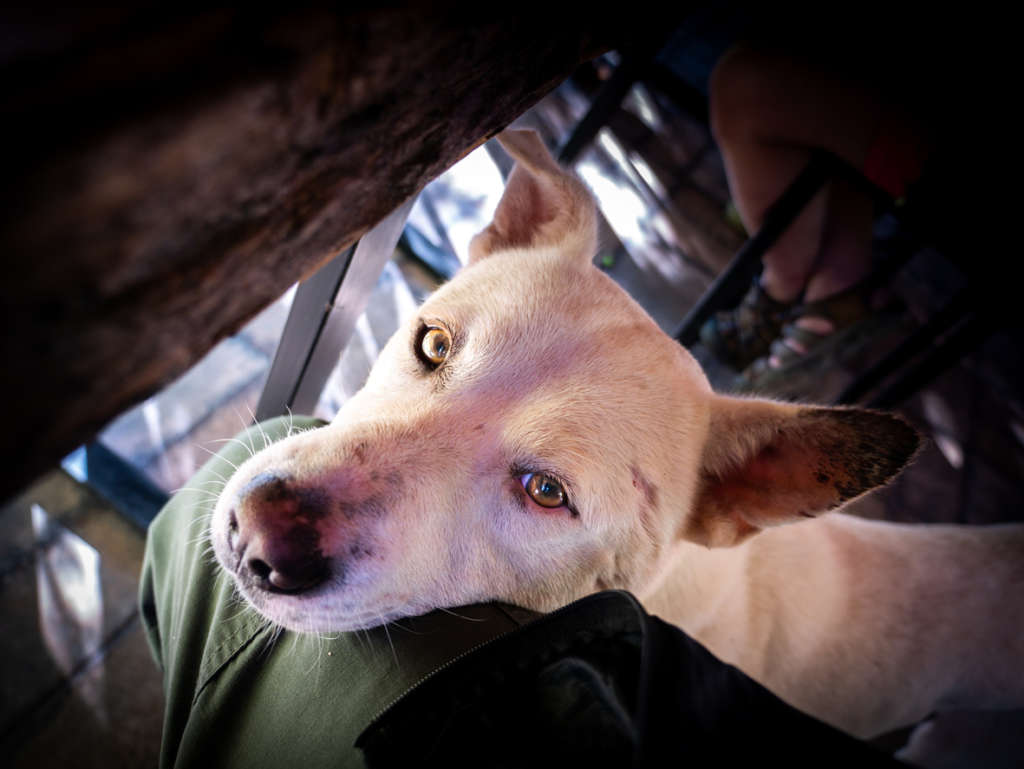

You’re wrong if you think your dog won’t remember you giving them that bite of steak during last night’s dinner. It only takes one time!
Not feeding your pet from the table doesn’t mean your pup can’t enjoy some healthy human scraps every now and then, it simply means that they don’t get to enjoy them at the table or while you are eating. Reward your dog for staying away from the table during mealtime and consider teaching your dog “place.”
Ask your dog to go to their bed, or “place,” and provide them with a treat-filled toy or their own dinner once they’re lying down. Teach your dog that it is more rewarding to be away from the table during mealtime, rather than under it.
9. Giving Permission To Counter Surf
If your dog finds food on the counter, it won’t be long before they come back looking for more. Prevention is key here. Reward your dog for staying out of the kitchen when you are home, and keep the kitchen closed off when you aren’t around to monitor your pup.
Keep food out of paws’ reach by storing it in the pantry or in the fridge. If you have kids, remind them not to leave their half-eaten snack or dirty dishes on the counter.
10. Slacking On Play & Exercise
Dogs need an outlet for their energy. If you aren’t providing one, your dog will provide one for himself and, odds are, you won’t like whatever they choose.
Make sure you are giving your dog plenty of exercise; a large majority of dog-related behavioral problems can be attributed to your dog not getting enough stimulation or exercise4. If your dog is running around the house and has a bad case of the zoomies, it’s time to take them out to play.
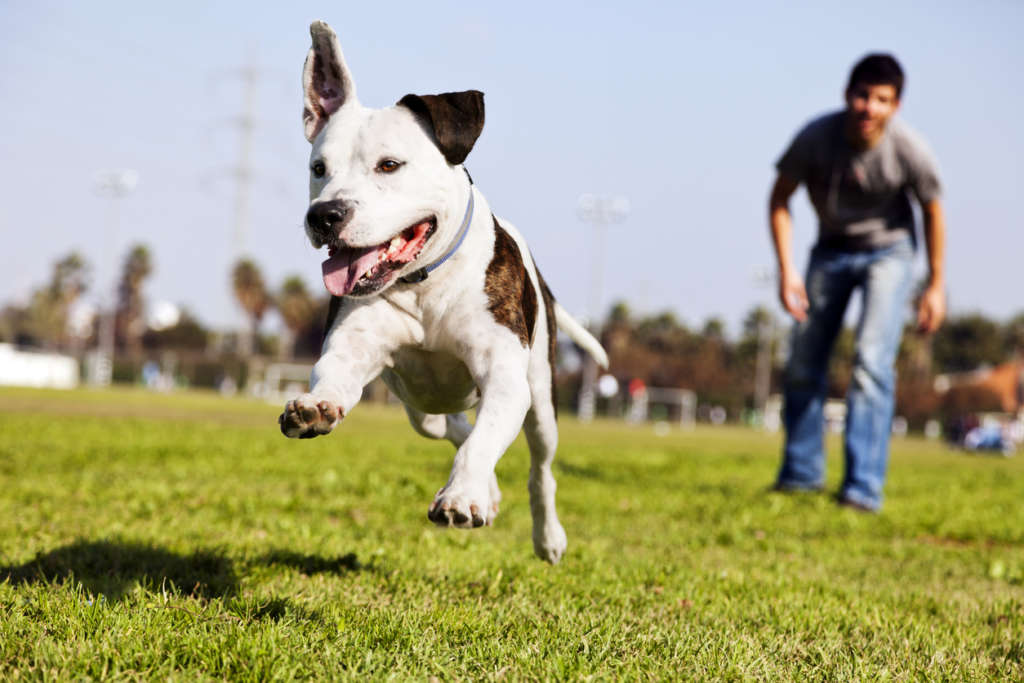

11. Using Rewards As Bribes
Does your dog only listen if you have a treat in your hand? Do you keep your hand in the treat pouch during a training session or move towards the cookie jar before you issue your dog a command? If you answered “yes,” you are one of many humans guilty of bribing your dog.
Most people begin training a behavior by luring their dog into position. Using a lure is okay in the initial stages of training a command, however, there is a fine line between a lure and a bribe, so it’s important to phase out the lure as soon as possible.
Think of positive reinforcement like a slot machine. If you play the slots and win the jackpot on your first, second, and third try, you just learned that the slots can be very rewarding. Chances are you’re going to keep playing even if you don’t win much on the fourth or fifth try.


You continue because you won in the past, and you want to win again in the future. The casino doesn’t have to guarantee a win for you to keep playing the game. Rate of reinforcement with dogs is similar. Teaching your dog to work without a bribe is important because a treat might not always be available.
12. Giving Mixed Messages On What’s Ok To Chew
Dogs don’t just have a desire to chew, they have a need to chew! Providing your dog with plenty of chew toys is the first step, but unfortunately not the last. Dogs need constant reminding of what is okay to chew and what isn’t.
Keep anything you don’t want your dog to chew off the floor! If you do catch your dog chewing on something off-limits, redirect him with a few cues (sit, down, touch), and then replace the item with one of their chew toys.
As soon as they start chewing on their toy, reward them! While your dog is learning, reward them with treats and praise each and every time you catch them chewing on one of their toys. They’ll soon figure out that their toy means chew time AND treat time. Keep your pup interested in their toys by putting them on a rotated schedule—an old toy can become a new toy if your pup hasn’t seen it in a while.
13. Enabling Puppy Nipping
Mouthy puppies can be sweet and funny when they’re little, but nipping can become dangerous fast. Don’t allow your dog to make teeth-to-skin contact with anyone, ever. When dogs first learn how to play, their litter mates and mother teach them what an acceptable mouthing pressure is, and what kind of wrestling is tolerated among other dogs.
As a puppy parent, it is your job to teach your dog the appropriate way to play with humans. Even if it’s a playful accident, let your dog know that nipping isn’t okay by exclaiming “OUCH!” and walking away. Don’t play with your pup for 15–30 seconds. Your puppy will soon figure out that if they don’t play appropriately, the game will end.
14. Escalating A Growling Situation
Growling is one of the few ways a dog can communicate that they feel threatened or scared. You should never punish a dog for growling; they’re telling you something important! If your dog is growling at something or someone, immediately remove your dog from the situation and DO NOT punish them.
Your pup just let you know that they feel threatened or scared, and that is something you should be grateful for. A dog that doesn’t growl is a dog that bites without warning. Additionally, don’t encourage your dog to growl during play. Growling should mean one thing, and one thing only: “I’m uncomfortable and I need to get out of here.”
15. Punishing Submissive Peeing
If you have ever been greeted at the door by a dog that stops and pops a squat, you have been greeted by a dog that submissively pees. Submissive peeing is one way dogs say “I’M BUTTERCUP AND I AM NOT A THREAT!”
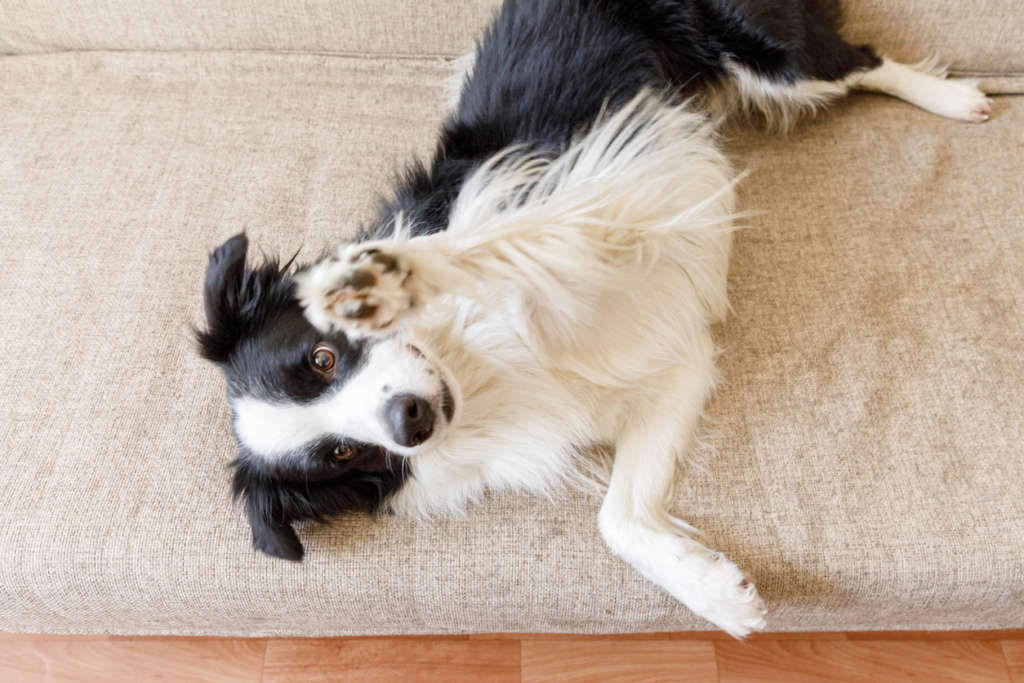

If your dog submissively urinates, there are a few things you may be doing that unintentionally make the matter worse. Petting, talking to, or even looking at a dog that feels the need to submit can drive the pup to submissively urinate.
If you think your dog is about to spring a leak, look away and ignore them. Give them a few seconds to calm down and allow some of the excitement to pass. Never scold your dog for submissively urinating, as that can make the matter much worse.
This article was reviewed by professional dog trainer Shelby Semel, an advocate of Positive Reinforcement Dog Training.
Sources
1Ziv, G. (2017). The effects of using aversive training methods in dogs—a review. Journal of Veterinary Behavior, 19, 50–60. https://doi.org/10.1016/j.jveb.2017.02.004
2Vieira de Castro, A. C., Fuchs, D., Pastur, S., de Sousa, L., & Olsson, I. A. (2020). Does training method matter?: Evidence for the negative impact of aversive-based methods on Companion Dog Welfare. PLoS One. https://doi.org/10.1101/823427
3DeGioia, P. (2014, March 27). Injuries, behavioral problems linked to retractable leashes. News. Retrieved February 11, 2022, from https://news.vin.com/default.aspx?pid=210&Id=6171678&useobjecttypeid=10&fromVINNEWSASPX=1
4Zilocchi, Marcella & Tagliavini, Zalea & Cianni, Elisa & Gazzano, Angelo. (2016). Effects of physical activity on dog behavior. Dogbehavior. 2. 10.4454/db.v2i2.34.

